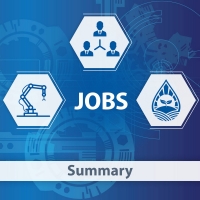Vietnam’s 50 million jobs are a cornerstone of its economic success in the last few decades, where a push towards services and manufacturing helped reduce poverty rates dramatically to less than 10% by both local or international standards, all the while increasing labor productivity and wages.
But several trends will impact Vietnam’s future jobs landscape. Shifting trade and consumption patterns will affect what Vietnam can export and in which value chains it will be engaged. The rise of knowledge-intensive industries will require new skill sets, production processes, and export models. An aging population will demand care services from a shrinking working age population. Automation may take over some jobs and transform the nature of others.
The World Bank’s Vietnam’s Future Jobs report details what it will take to help Vietnam adapt given the current structure, where foreign factories paying above the minimum wages typify, at best, only 2.2 million jobs, while domestic firms provide no more than 6 million jobs. Meanwhile, 30 million Vietnamese jobs are in family farming or household enterprises. Another 8 million workers are uncontracted wage earners. In general, these jobs are characterized by low productivity, low earnings, and few worker protections.
Reforms that proactively take advantage of the opportunities emerging from these trends can lead to more productive, better paid and higher quality jobs. If Vietnam continues along its current development path, its future jobs will look a lot like today’s jobs, with the same pockets of exclusion. But concerted reform efforts in three areas will shift the trajectory by setting the context for a better jobs future for all, including:
- Creating more “good jobs” in the modern economy, by (i) lowering the barriers to growth of domestic small and medium enterprises, (ii) fostering a transition to knowledge segments of regional and global value chains and (iii) developing Vietnam’s agro-food system to serve growing domestic and international markets.
- Enhancing the quality of existing jobs in traditional sectors, by (i) assisting small family farmers to move into high-value crops and local value chains, and (ii) providing technical assistance to household enterprises to link to the domestic SME sector.
- Connecting qualified workers to the right jobs. While Vietnam’s youth are recognized for academic achievements on par with those of European youth, 85% of Vietnam’s labor force has no more than a secondary education. Three policies are recommended: (i) building skills for 21st century jobs by radically reforming the education and training system, (ii) generating and providing information to place the right workers into the right jobs, and (iii) providing auxiliary services to facilitate labor participation and labor mobility.
 |  |  |  |
|---|---|---|---|
| Vietnam's future jobs: leveraging mega-trends for greater prosperity. Download overview | Two pages summary. Download | Vietnam's future jobs: role of the private sector. Download | Vietnam’s future jobs: the gender dimension. Download |



